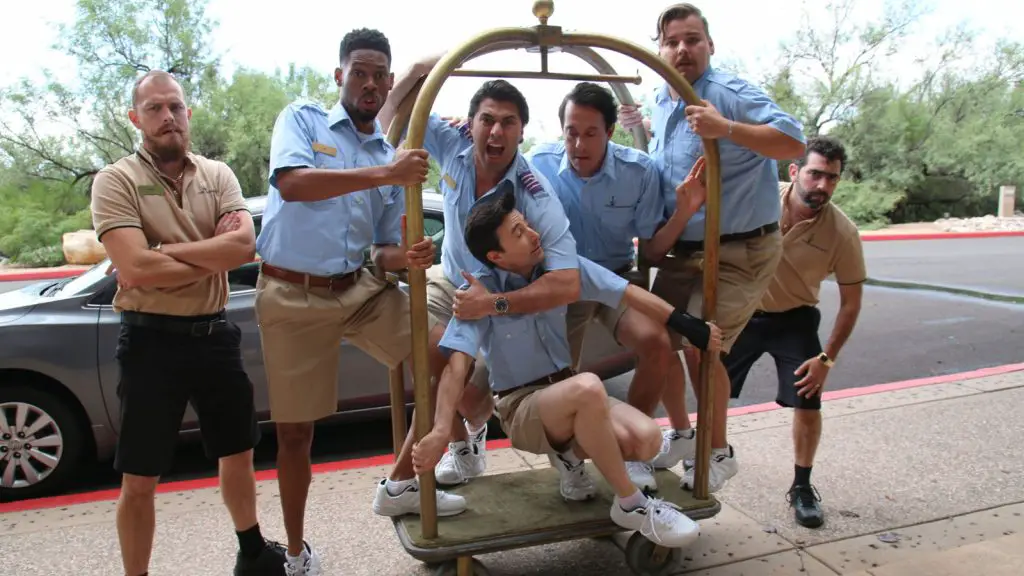
For several generations, Hollywood’s Western films shaped the public perception on the American Indian culture. Not surprisingly, the result has been lopsided and erratic – Indians are viewed as either bloodthirsty savages or weirdly spiritual beings.
“Reel Injun” is a unique production: a documentary that measures how the Indian community views Hollywood fare. Director Neil Diamond (a Cree Indian – not to be confused with the Brooklyn singer of the same name) steals a page from Ross McElwee and embarks on a transcontinental road trip, pausing along the way to view notable sites and speak with Indian filmmakers, actors and writers regarding their perception of the big screen Indian. Famous palefaces such as Clint Eastwood and Jim Jarmusch pop up, too, and even Sasheen Littlefeather is brought out to talk about her brief spotlight moment via Marlon Brando’s Oscar snub.
For the most part, contemporary Indians look at the old films with a mix of bemusement and indifference. Some harsh words are aimed at John Wayne and the 1939 classic “Stagecoach,” and a sequence at a summer camp where white kids pretend to be Indians is astonishing for all the wrong reasons. Even more astonishing, however, is the discovery that two of the most famous Indian actors in Hollywood history were phonies: Chief Buffalo Child Long Lance was actually Sylvester Long, a North Carolina janitor’s son of mixed white-black-native descent, while Iron Eyes Cody was Espera Oscar de Corti, a Louisianan of Sicilian heritage.
As a history lesson, the film is curiously lacking. There is no mention of the two landmark films that formed the basis of documentary filmmaking: Edward S. Curtis’ 1914 “In the Land of the Headhunters” and Robert Flaherty’s 1922 “Nanook of the North.” (Diamond incorporates the Inuit people into his definition of the North American aboriginal population.) Also missing are the 1950 “Broken Arrow,” the first studio film to present the American Indian as a screen hero, the 1952 Oscar-nominated nonfiction feature “Navajo,” and two Hollywood films that offered a rare view of modern Indian figures, “Jim Thorpe: All-American” and “The Outsider,” with Tony Curtis (of all people) giving a credible performance as Ira Hayes. Yet the most famous Indian actor of the 1950s, Jay Silverheels, is not cited, while contemporary documentary films made by Native filmmakers are also ignored.
Still, what is on screen is often shocking: Boris Karloff in redface make-up for Cecil B. DeMille’s “Unconquered,” John Wayne calling an Indian character “blankethead” in “The Searchers,” Bugs Bunny musically commenting on fatally shooting Indian warriors, Tom McLaughlin as the barefoot karate-chopping Billy Jack, Cher’s gloriously kitschy music video for “Half Breed,” Kevin Costner avoiding suggestions of interracial romance by conveniently finding a white woman in a Native community in “Dances with Wolves,” and the garish absurdity of Disney’s concept of Pocahontas (the real Indian princess was about nine years old when Capt. John Smith turned up in Virginia).
“Reel Injun” is a well-intended but uneven effort. Anyone with a genuine interest in this area might want to use this as a stepping stone for further research into this complex and difficult subject matter.

This is not a very smart film. Many American Indian actors who talked in this documentary are hypocrites. Many of them have and are still making films or even video games (voice acting) that stereotypes there race in one form or another.
Also, I’m a little surprised that both the film and this commentary incorrectly lump actor Daniel Day Lewis into the whites-playing-Indians category. That’s not ture at all, his character in Last of the Mohicans was indisputably white, and has been since James Fenimore Cooper published the book in 1826.
Hawkeye’s mixed background (born to white parents but raised by Chingachkook) is central to the story, because it allows him to be a partial member of multiple groups — bridging but never belonging. This is made quite clear in the film.
The film The Searchers gets a free pass, as always. That’s nothing more than trying to make a KKK character into a good.
Also, I just heard the filmmaker, and when asked about the lack of Jay Silverheels (real name: Harold Smith), he mentioned there was already a documentary about him, and he’d rather devote more filmtime to uncovering new items. He didn’t mention the documentary name, but I suspect he was referring to ‘Jay Silverheels: the Man Behind the Mask.’ He also said that there were films he ‘missed’ was really due to lack of time. A movie should be of a certain length, and some things would be left out or else the film may end up multiple hours in length. When you have only X minutes and you have X+Y minutes of footage, you have to cut out Y+ minutes out. As a result, anyone can nitpick and say “oh, he missed this film”. Unasked but I suspect another reason was that he didn’t get the rights to include cuts of some of those films, but that’s more a guess.
The reason that Tony Curtis’s portrayal isn’t in there is because you cherish it and Native People would cite that as another instance of redface and be right to do so. This film is unique in that it’s from the perspective of a Native Film Maker and as such what you call uneven I call unprecedented and really have to scoff at your review.